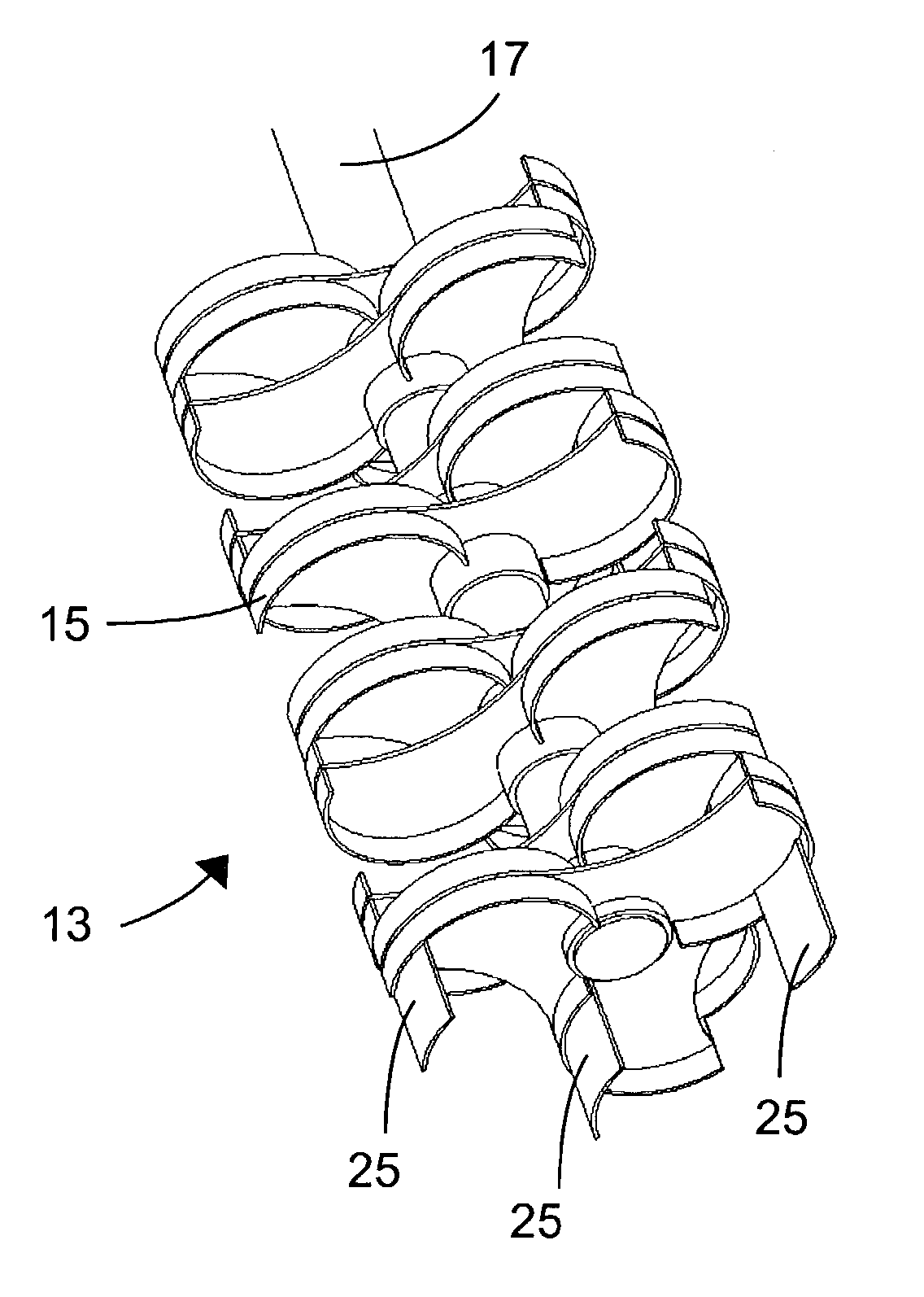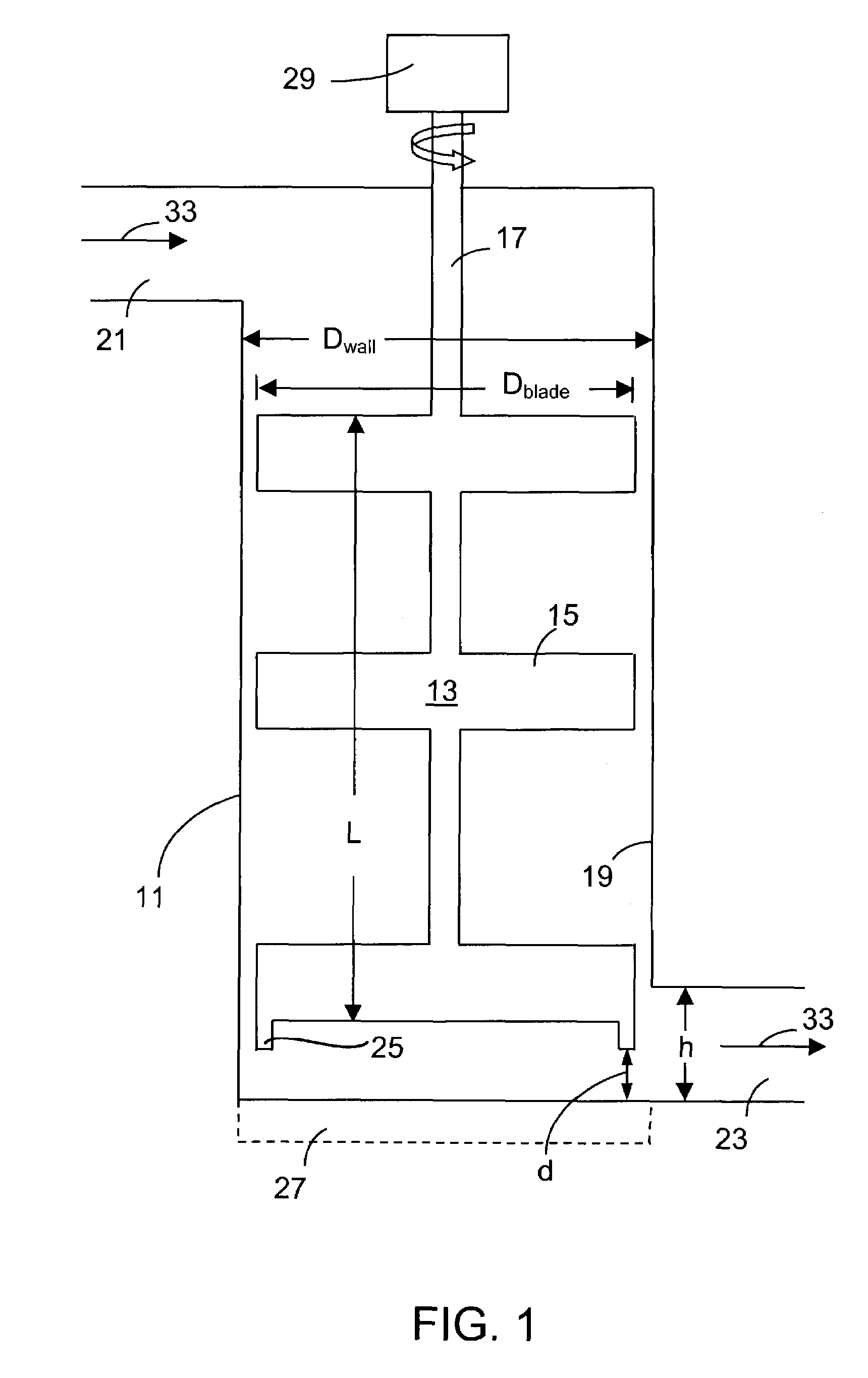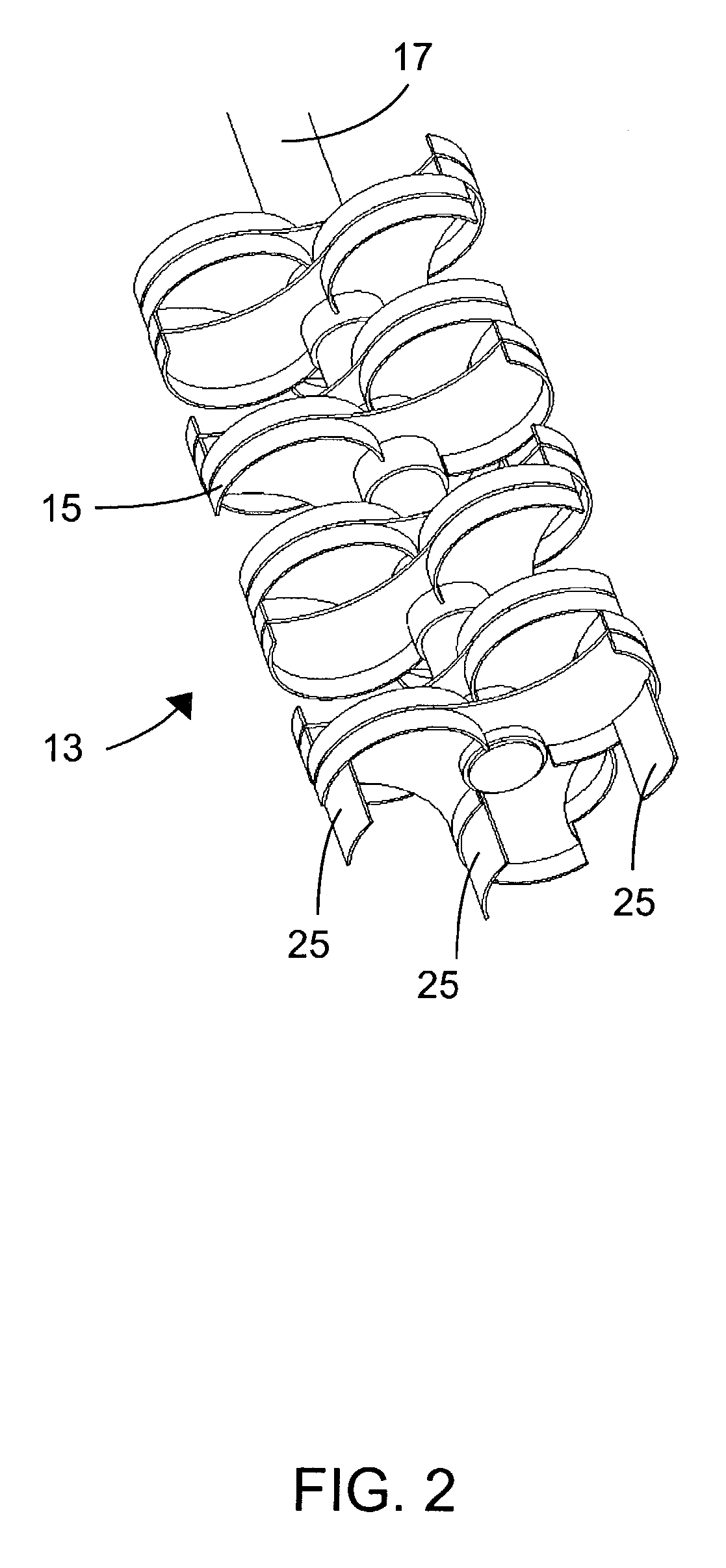Methods and apparatus for homogenizing molten glass
a technology of molten glass and homogenization method, which is applied in the direction of manufacturing tools, instruments, transportation and packaging, etc., can solve the problems of individual difficulty in seeing on a microscopic scale, increased cutting frequency, and potential dispersion rate, and designed to produce high shear stress
- Summary
- Abstract
- Description
- Claims
- Application Information
AI Technical Summary
Benefits of technology
Problems solved by technology
Method used
Image
Examples
example 1
[0072]As an example of the application of the concepts discussed above, Table 1 compares two stirring systems, the first being representative of previously used stirring systems (e.g., a stirring system having a blade diameter of 6 inches, a glass viscosity of 3000 poise, and a stirrer rotational speed of 30 rpm), and the second one being representative of a stirring system designed in accordance with the invention (e.g., a stirring system having a diameter of 10 inches, a glass viscosity of 1000 poise (achieved by increasing the temperature of the molten glass by, for example, approximately 80° C.), and a stirrer rotational speed of 6.3 rpm).
[0073]As can be seen in this table, the shear stress on the stirrer can be reduced almost by an order of magnitude by increasing the stirrer diameter from 6″ to 10″ and reducing the stirred glass viscosity from 3000 to 1000 poise. These changes allow a stirrer speed reduction by a factor of four. A useful byproduct is that the torsional stress ...
example 2
[0074]FIGS. 6 and 7 show comparisons between historical stirring (diamond data points) and stirring performed in accordance with the present invention (square data points). The data was obtained using actual production equipment. In all cases, stirring was performed using a substantially vertically-oriented stir chamber and a substantially non-pumping stirrer having a substantially vertically-oriented shaft.
[0075]The straight line of FIG. 6, which is a fit to the historical data, shows that prior to the present invention, high Q•E products were only achieved through the use of high levels of shear stress. Conversely, low levels of shear stress were only achieved with low Q•E products. In contrast, stirring in accordance with the concepts of the present invention simultaneously achieves low shear stress and high Q•E products.
[0076]The importance of low shear stress in the production of LCD glass is illustrated in FIG. 7. As shown therein, in accordance with the invention, the level o...
PUM
| Property | Measurement | Unit |
|---|---|---|
| Pressure | aaaaa | aaaaa |
| Size | aaaaa | aaaaa |
| Mass flow rate | aaaaa | aaaaa |
Abstract
Description
Claims
Application Information
 Login to View More
Login to View More - Generate Ideas
- Intellectual Property
- Life Sciences
- Materials
- Tech Scout
- Unparalleled Data Quality
- Higher Quality Content
- 60% Fewer Hallucinations
Browse by: Latest US Patents, China's latest patents, Technical Efficacy Thesaurus, Application Domain, Technology Topic, Popular Technical Reports.
© 2025 PatSnap. All rights reserved.Legal|Privacy policy|Modern Slavery Act Transparency Statement|Sitemap|About US| Contact US: help@patsnap.com



